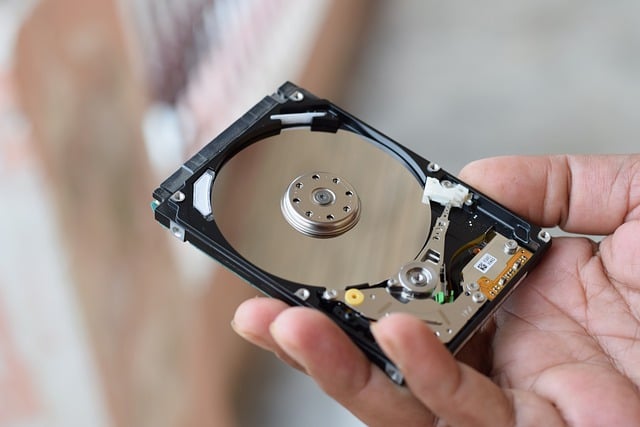Choosing the right laptop can be overwhelming with the myriad of specifications and options available. To simplify the decision-making process, I’ll guide you through two key categories: interest-based and performance-based specifications. Understanding these will help you select a laptop that best fits your needs and preferences.
Screen Size As A Laptop Requirement
Screen size plays a crucial role in determining the usability of your laptop. For battery efficiency and portability, opt for a screen size of 14 inches or less. For a better visual experience, such as watching movies or working on graphics, a screen size of 15.6 inches or larger is preferable.
Secondary Storage

This includes a Physical Hard Drive for storing your personal data. It’s completely your choice which kind of hard disk you prefer and how much space you want; it all depends on your needs. for your information, I must tell you that there are 2 kinds of hard disks.
- SSD: A solid-state hard disk is a fast, less fragile, and durable data storage disk but way too expensive.
- HDD: HDD (hard disk drive), on the other hand, is the more commonly used and offers more storage at a lower price.
I recommend choosing a laptop that has slots for both an HDD and an SSD. Use the SSD to store the operating system and boot files, which will enhance system speed and responsiveness. The HDD can be used for secondary storage, such as files and applications, providing ample space for data without compromising on performance.
Touch Screen
The touch screen feature in laptops is evolving just like the touch features in the smartphone during the start of the touch revolution. There is not much to do with touch screens in laptops for a normal user. If you prefer it, then you can check it out too. Below is the list of some pros and cons of this feature.
Pros: You can tap to select, hold and drag to move items, swipe to scroll, and pinch to zoom.
Cons: This feature is currently available on select Windows laptops and select Chromebooks.
Performance-based Specification Set
1. Processor
Basics of Processor
The processor is the most important part of your computer that drives your whole computer. More powerful is the processor, faster is the execution. The power of the processor is calculated by its clock speed, which means the number of instructions executed per second. When you say a 2GHz processor, it means 2 billion instructions executed per second. When you play a high-end game or run some heavy application software, you need the instruction execution way more than 2GHz.
Read Also : Want to code faster, smarter, and more efficiently? AI coding assistants are here to help!
Intel or AMD?
There are two major companies that make processors for personal computers, viz., Intel and AMD. At least 90% of the time users go for Intel; it’s not because AMD is not good enough but because Intel processors are more common in the market and most of the consumers have a satisfactory experience with Intel’s current processor series, i.e., i3, i5, i7. For this very reason, I will recommend you go with Intel.
Recommended: Intel
i3 or i5 or 17?
All three processors from intel are equally good but designed to serve different purposes. Due to the limited number . of laptops available with top-notch i3 processors, we consider it less efficient, but it is not completely true. There are 3 major processors embedded in laptops majorly available in the market. (i5 and i3)
Intel i3 4005u 3M Cache 1.7Ghz: This is the 4th generation i3 processor from intel and currently ruling the market. It has 2 cores and 4 threads (primary execution unit). (Recommended for general-purpose users)
Intel i3 5010u 3M Cache 2.1Ghz: This is the latest 5th generation i3 processor from Intel and will take the position of i3 4005U in few months. currently, there are only a few laptops available with this laptop but if you find one that suits you, I think this is the best buy. (Recommended for general Purpose users and Students)
Intel i5 5200M 2.2 GHz (Turbo Boost up to 2.7 GHz): This is the 5th generation i5 processor that comes with most of the i5 laptops today. This processor is almost equivalent to Intel 13 5010U, unless you really need the turbo boost. this is a standard processor to run some heavy software. I still recommend professional designers go with the desktop, but for starters, this processor and above will work just as fine.
Recommended for Students (to run heavy software), gamers and designers.
2. Primary Memory (RAM)
Ram is the primary memory that stores the temporary data while execution. RAM is faster than your secondary memory, i.e., hard disk; therefore, your processor needs the data in faster memory, i.e., for faster execution. If you intend to run heavy software, then it is recommended to use larger RAM; it will speed up your computer. For general purposes, 4 GB of RAM is considered good. If you need more, you can either go for the laptop with higher RAM or externally attach additional RAM.
3. Graphics Processing Unit (GPU or Graphics Card)
A graphics card controls the display on your laptop. A powerful graphics card can render videos and graphics-intensive games easily, making them suitable for power users such as professional gamers or programmers.
Usually, there are two kinds of graphics cards: the integrated graphics card that is included in the processor itself; the latest is the processor (latest generation); the latest will be your integrated graphics card.
Another kind of graphics card is the Dedicated Graphic card. It enhances the graphics produced by your laptop and renders the complex graphics very smoothly so that you won’t get any lag.
For users who don’t play graphics-intensive games, edit videos or edit images, an integrated graphics card is ideal.
Operating System
Operating system is another important factor that you must consider while buying the laptop. There are different kinds of operating systems available for you, like 1. Windows, 2. Ubuntu, 3. Mac, and other Linux-based operating systems.
Windows operating system is the most famous and widely used operating system, and if you are into apps and games, then you must buy a laptop with Windows operating system because of the huge repository of apps and games available for this platform.
You can also choose not to buy any operating system with your laptop if you think you already have one with you; this will save you a few bucks.

This Post Has 0 Comments